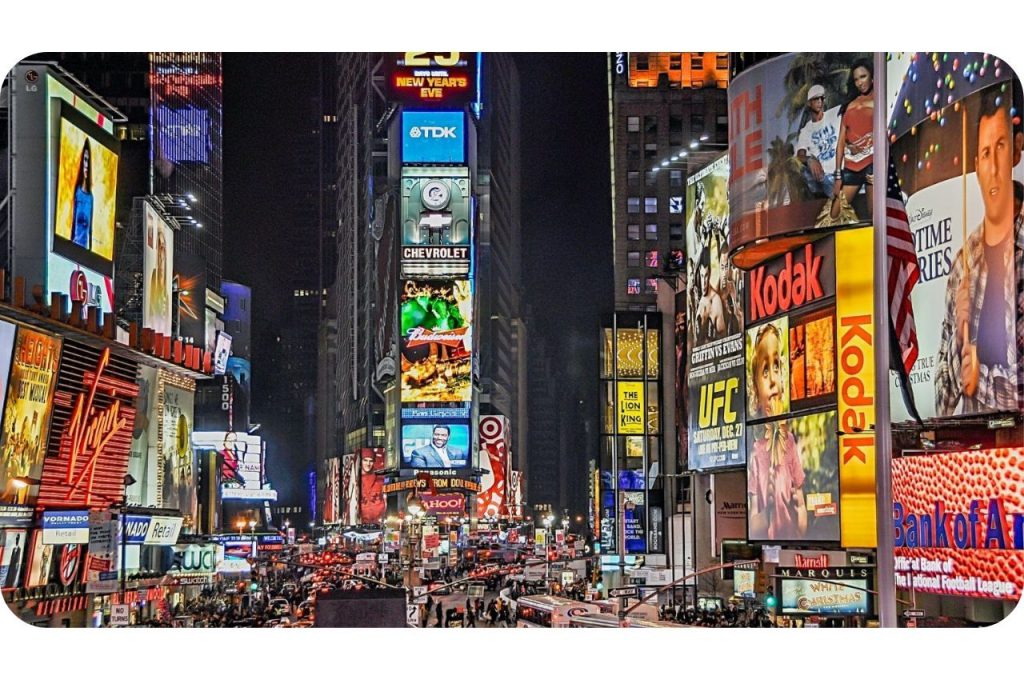
Demand generation, in short, involves targeting broadly to widen the potential pool of consumers, whilst driving measurable demand for a product/service. Demand gen focuses on discovering prospects that already exist, as well as stimulating interest with a new audience. Often, brands aim to drive demand by supplying a solution (within a product or service) for an existing problem or consumer ‘pain-point’.
According to Thinkbox ‘Demand Generation’, demand-generating campaigns are the ones that drive the most business growth because the more people that know a brand, the more likely they are to drive sales.
What is the key to growth?
Arguably, a purchase is the most impactful way to create a long-lasting memory of a brand. Whilst more brand awareness can certainly help to drive sales, it is often the case that consumers will simply choose one product over another due to ease of purchase.
People are more likely to buy from a brand if they are already in the market, or if the benefit outweighs the effort in terms of cost, time or accessibility. To put it simply, people want the easy option.
A more direct approach can therefore often work for newer businesses that want to see immediate results, as the right advertising can essentially divert consumers from their branded choice and drive sales.
“An example is Amazon Prime, which influences people to purchase many unknown brands simply because they can buy with one click and benefit from free overnight delivery.”
Does TV come with fewer risks than other advertising mediums?
TV provides the most consistent return on investment (ROI) in comparison to other media channels. According to Thinkbox, Linear TV advertising and BVOD deliver just 20% of variance compared with the median return – with BVOD performing slightly better than linear TV. This means that the middle 50% of results are within 20% (+/-) of the median ROI.
Whilst there is evidence that BVOD does perform well from an industry point of view, our independent data shows that Linear TV remains more responsive. The premium charged for BVOD often outweighs the targeting advantages, making TV better value for most audiences.
BVOD, by its nature, also contradicts one of the key findings of this study, which is that broad targeting is better than narrow. BVOD broad targeting is very expensive relative to TV and therefore is more difficult to get to work from a performance point of view.
When is the right time to utilise BVOD?
BVOD becomes important to advertisers in two situations:
- When a very niche audience is required; at ARM we calculate the ‘wastage’ of linear TV and compare it to BVOD pricing. In some cases, with very niche audiences, BVOD will be the more effective option.
- When reach is a key performance metric; Linear TV can efficiently reach around 65% of most audiences. Pushing through this ceiling can mean investing more in the frequency against heavier viewers, rather than reaching new ones, which is where BVOD can come in.
TV is a great driver of immediate, accountable results for advertisers whilst driving long-term brand-building. BVOD is more useful for very niche audiences, or for expanding reach in branding-focused campaigns.
ARMalytics enables our clients to track the immediate impact of TV advertising, from visits to sales, which enables us to work with our clients to scale their businesses quickly and efficiently.
FEATURED READS
TV generates the highest ‘multiplier effect’
Thinkbox’s ‘Demand Generation’ study also found TV to have the highest ‘multiplier effect’ of other media channels, including online search and display. TV made other media work harder by boosting the performance of the channels used in a campaign by up to 54%, compared to around 8% across other channels.
TV can improve performance in cinema by up to 54%; print, radio, online display, and social media by up to 31%, and direct mail, online video, video-on-demand, and outdoor by up to 22%.
So, how exactly does TV boost performance in other areas?
Our ARMalytics data shows that TV advertising continues to successfully drive brand search terms. This is highly advantageous and cost-effective for newer businesses because it reduces the cost-per-click charged by the search engine (usually Google).
Generic searches are performed by people without a prompt into a market from a specific brand, whereas brand searches are likely performed by consumers who are ready to purchase or at least have an interest in a brand-specific product.
Start-ups and scale-up businesses can grow rapidly with little brand advertising, and these brands have the dual benefit from TV of building brand equity and driving sales (Mediatel).
FEATURED READS
Should small businesses prioritise growth?
Thinkbox say that scale is the biggest driver and small businesses should prioritise growth over profit, as “it’s the growth that drives the profit”.
However, our experience proves that over-investing in the short-term is not a sustainable model for most businesses that we work with. Big spenders including Amazon, Glaxo, and Unilever need to chase long-term brand growth (and can afford to do so) but most brands will want to see an ROI as quickly as possible, so a more direct yet ‘always-on’ approach is necessary for business growth.
TV advertising with a performance goal can drive long-term brand awareness and growth simultaneously.







